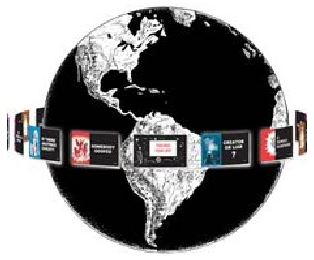Billions of Years?
- Issue Date: September/October 2002
In the following excerpts, Thomas Heinze sets out the goal of his new book How Life Began...
© by Thomas Heinze, Reproduced by permission
In the past, many people were convinced that the first life could have been formed by chance because the time available was so incomprehensibly vast. The famous Harvard biology professor George Wald popularized this idea in 1955 with his famous quote:
"Time is the hero of the plot. The time with which we have to deal is of the order of two billion years... Given so much time the 'impossible' becomes possible, the possible probable, and the probable virtually certain. One has only to wait: time itself performs miracles."
To understand probabilities, we often use the illustration of flipping a coin. If you want a penny to come up heads a thousand times in a row, there will be more chance of it happening if you flip it for two billion years than if you flip it for an hour. Wald has something like this in mind.
Time, however, does not increase the chance that the penny would turn into a nickel, a dime, a quarter and a silver dollar which would then sprout wings and fly off together into the sunset doing aerobatic stunts in a tight formation. Time does increase the probability of something happening if it can happen, but the statement "time itself performs miracles" is false.
Wald understood that if one took the evidence at face value, it would be impossible not only for chance to put together a first cell, but even for it to put together any one of the many necessary proteins. To keep from resorting to God, he needed to find something else which could do miracles. His quote, "time itself performs miracles" seemed to explain how things that could not happen without miracles could have happened. His whole statement seemed possible because part of the statement was true.
If someone says that a frog turned into a prince, we immediately recognize it as a fairy tale. But when respected teachers and textbooks tell us that in many millions of years frogs did in fact turn into princes, the idea somehow sounds scientific. Billions of years are even better. This book, however, is not concerned with how convincing billions of years can be made to sound, but with, "Could they perform the miracle of life?" Evaluate the evidence for yourself.
In the book, Heinze addresses the following foundational question. If the answer is no, then the whole structure of evolution collapses.
Evolutionists claim that simple chemicals became concentrated in ancient oceans, forming an organic broth which eventually produced living cells. Is this possible?
In 1953 Stanley Miller became famous for his experiment which produced amino acids by passing a spark through gasses which contained the elements that make up amino acids. Evolutionists hoped their students would believe without question that amino acids would produce life. But Heinze reveals the facts evolutionists won't tell you. The amino acids produced would not work in any living things. The more recently suggested steps in "Chemical evolution" will not take place either. The idea is scientifically bankrupt, and the foundation of evolutionary thinking is destroyed.
Full of quotes from the best known scientists in the field, How Life Began is a great gift for students, teachers and school libraries. Learn how the scientific facts speak powerfully of an intelligent Creator, without whom life could never have begun. Learn how to know Him personally.
- See more articles on related topics:
- Creation
- Evolution
- Evangelism
Other Articles from September/October 2002:
- Sodomites Moving in on Children's Clubs
- Sex Scandal Has Catholicism Redesigning Confessional
- International Criminal Court
Brings One World Government Closer
- What's In a Name? God says, 'A Lot!'
- Chick Mail Bag Sep-2002
- Radical Muslims Recruiting in U.S. Prisons
- Prison Ministry Letters: Sep-2002
- Tract Passing Tips
- Court Declares Door-to-Door Witnessing Protected
More on Evolution:
Products of Interest:

Big Daddy?
A student proves evolution is full of holes.-

Primal Man?
32-PAGE, FULL COLOR COMIC BOOK - This story proves evolution is impossible. Connelly says he is convinced, but keeps producing evolution films. You will learn why.
-

Vanishing Proofs of Evolution, The
96 pages
Are your children being taught scientific "proofs" of evolution that have already been disproven?



